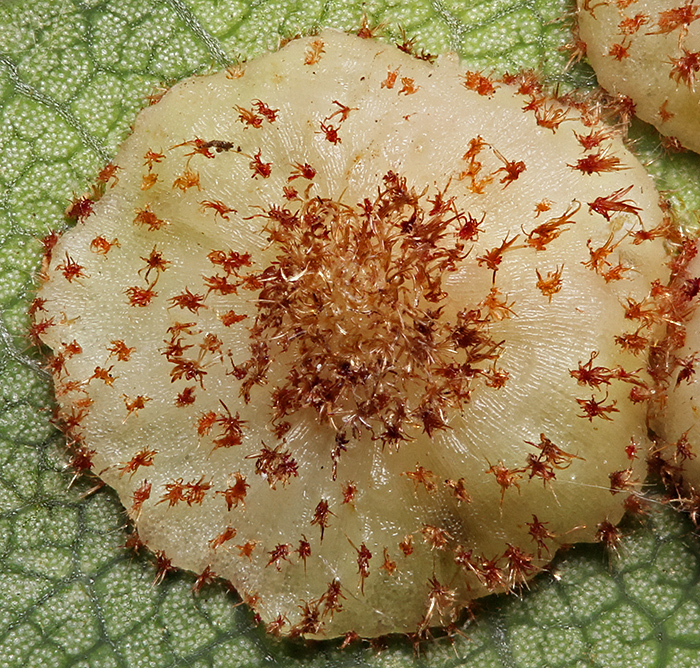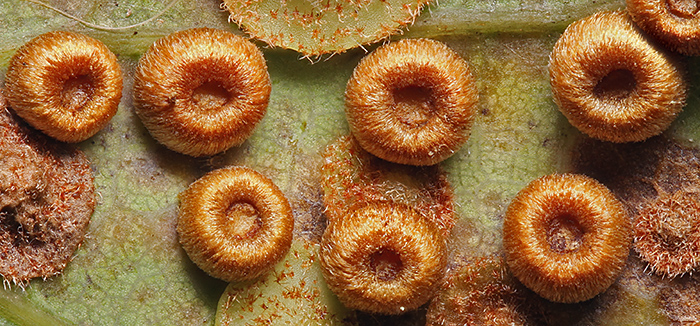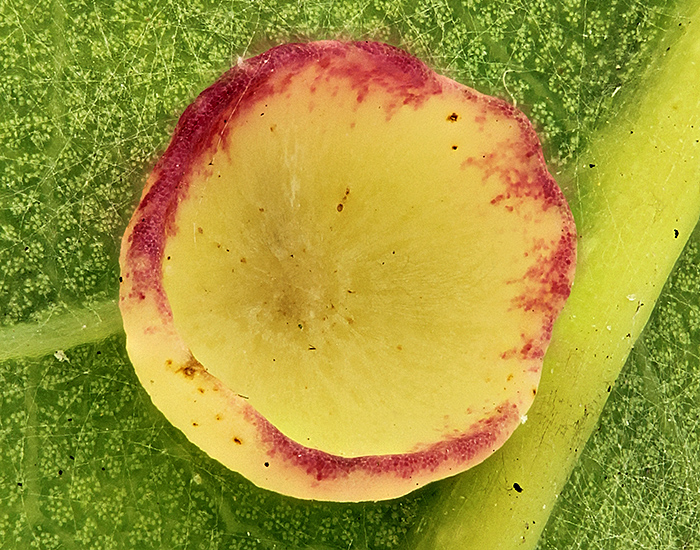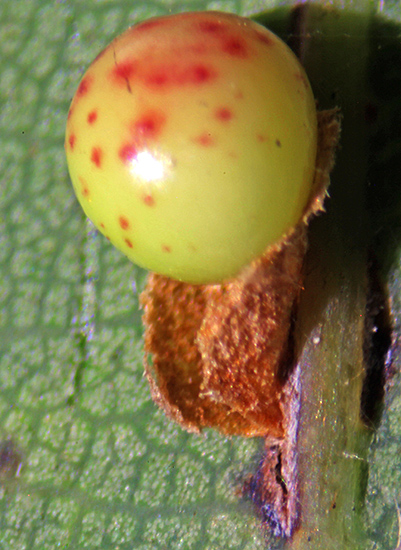Oak leaf galls
 Alan Wood
Alan Wood
Galls are abnormal growths of various sizes and shapes that can be found on any part of a plant. They can be caused by viruses, bacteria, fungi, nematodes, mites and insects.
Insect galls are formed when the adults or larvae release chemicals into the plants, and the larvae develop inside the gall, which is the insect’s source of nutrients and also provides protection from predators.
Several types of insect galls are found on leaves of oak trees; we often find them during excursions to Wimbledon Common, and they are easy to observe with a stereomicroscope.
Several types of spangle galls (caused by Cynipid wasps) are found on oak leaves.
 Whole oak leaf with spangle galls and leaf mines
Whole oak leaf with spangle galls and leaf mines
 Early stage common spangle galls on oak leaf; the galls are 1.5 mm in diameter
Early stage common spangle galls on oak leaf; the galls are 1.5 mm in diameter
 Late stage common spangle galls on oak leaf, caused by Neuroterus quercusbaccarum
Late stage common spangle galls on oak leaf, caused by Neuroterus quercusbaccarum
 Common spangle gall
Common spangle gall
 Silk button spangle galls on oak leaf, caused by Neuroterus numismalis
Silk button spangle galls on oak leaf, caused by Neuroterus numismalis
 Silk button spangle gall on oak leaf
Silk button spangle gall on oak leaf
 Smooth spangle galls on oak leaf, caused by Neuroterus albipes
Smooth spangle galls on oak leaf, caused by Neuroterus albipes
 Smooth spangle gall on oak leaf
Smooth spangle gall on oak leaf
Spangle galls are not the only sort of galls found on oak leaves:
 Pea gall on oak leaf, caused by Cynips divisa
Pea gall on oak leaf, caused by Cynips divisa
- Find out more about galls on Wikipedia
- British Plant Gall Society
- British Plant Galls by Margaret Redfern and Peter Shirley
- Britain’s Plant Galls: A Photographic Guide by Michael Chinery

